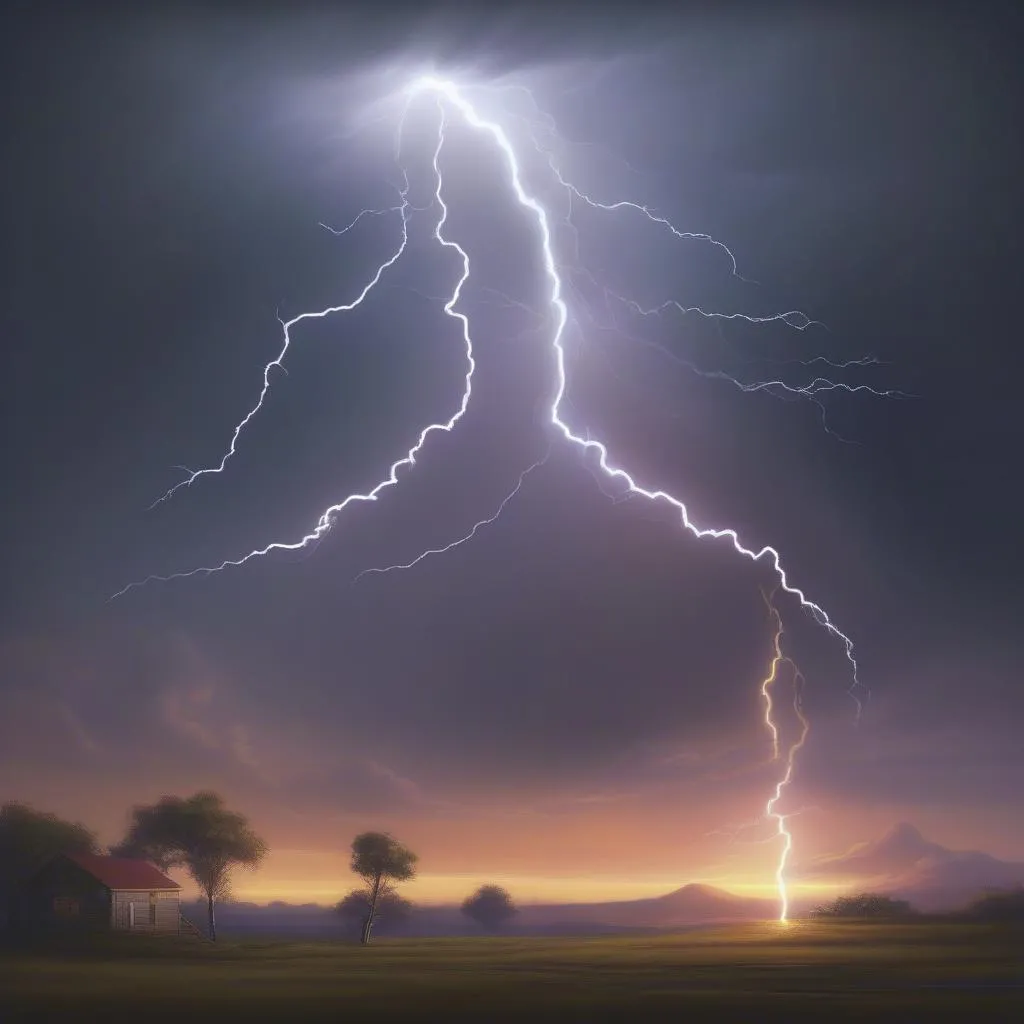Have you ever been caught in a thunderstorm, watching the sky light up with jagged bolts of lightning? It’s a mesmerizing yet intimidating spectacle of nature that makes you wonder about the forces at play. One question that often pops up is, “What direction does lightning actually travel?” Buckle up, because we’re about to embark on an electrifying journey to uncover the truth about lightning’s path.
Decoding the Dance of Electrical Discharge
While it might seem like lightning strikes down from the sky, the reality is a bit more complex. Lightning is essentially a massive electrical discharge, and its journey involves a fascinating dance between positive and negative charges.
The Genesis of a Spark
Storm Clouds as Charge Separators: Inside a storm cloud, tiny ice crystals collide with larger hailstones, creating static electricity. This process causes the cloud to become a giant battery, with positive charges gathering at the top and negative charges amassing at the bottom.
The Earth’s Response: As the negative charges build up in the cloud’s base, they create an electric field that influences the ground below. The Earth, in response, starts accumulating positive charges, drawn towards the negatively charged cloud base – much like metal objects being attracted to a charged balloon.
The Invisible Pathway: This attraction between opposite charges creates an invisible channel of ionized air called a “stepped leader.” This leader zigzags downward from the cloud, seeking the path of least resistance to connect with the positive charges below.
The Upward Surge: When the stepped leader gets close enough to the ground, a positively charged streamer shoots upward from the ground (often from tall objects like trees or buildings).
The Brilliant Flash: This connection between the stepped leader and the upward streamer completes the circuit, creating a path for the massive surge of electricity to flow. This surge, traveling upward from the ground to the cloud, is what we perceive as the bright flash of lightning.
So, Up or Down?
Technically, the initial flow of electrons that we see as the bright flash does travel upward. However, the entire process is more of a two-way street, with charges moving both up and down to neutralize the electrical imbalance.
 Lightning Strike Illustration
Lightning Strike Illustration